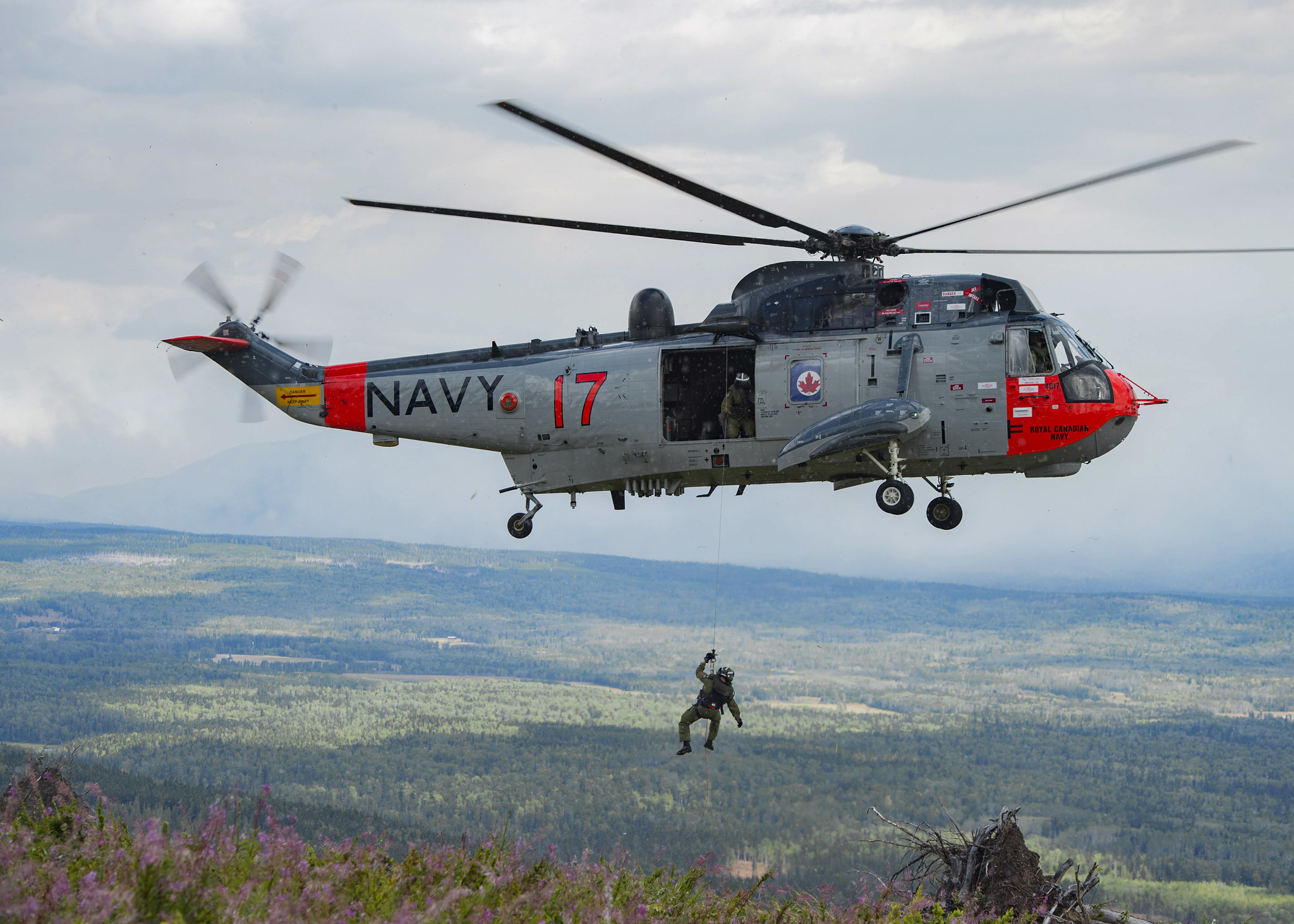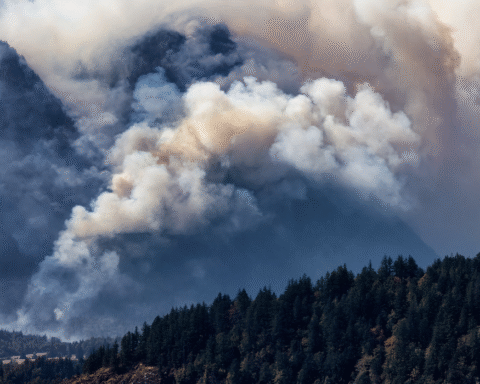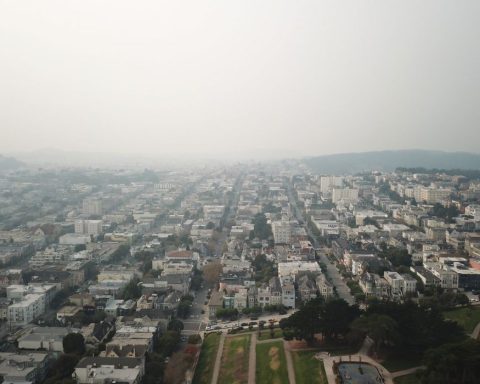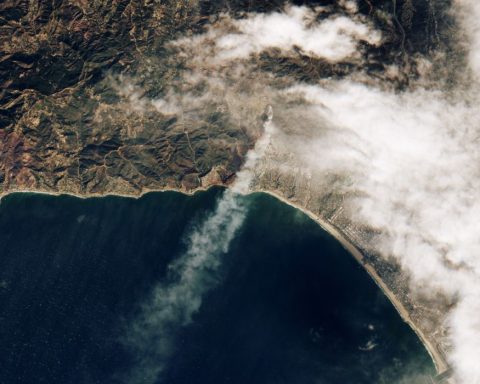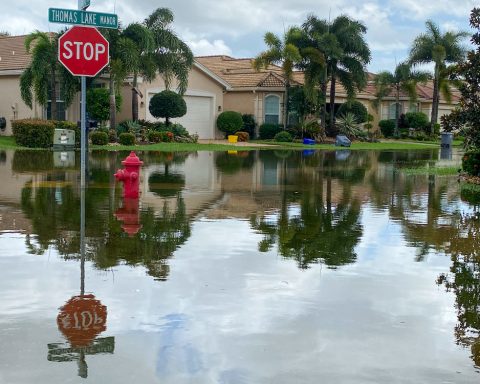In 1944, the Japanese military launched Operation Fu-Go, which involved sending thousands of hydrogen balloons carrying incendiary bombs across the Pacific Ocean. The idea was that the jet stream would carry them to North America, where they would ignite massive forest fires in Canada and the United States. Japan hoped this would cause panic, divert resources and lower morale. The plot was foiled in part because many of them were launched during the winter wet season, when forests were less flammable.
For the past few summers, however, hostile forces have launched a relentless assault on Canada – setting forests ablaze and forcing hundreds of thousands of Canadians from their homes. Across the country, millions choked on acrid smoke. In just three years, this enemy has burned an area nearly half the size of Alberta, leaving behind charred landscapes and shattered communities.
That enemy is wildfires. Once part of nature’s regeneration cycle, they are now four times more destructive than they used to be, driven by hotter, drier conditions. Megafires of this scale are the new normal. While wildfires are inevitable, the scale of the damage is not. Our inaction has made the crisis far worse than it needs to be.
If these attacks had been made by a foreign adversary, we would be operating at “DEFCON 1,” deploying every resource at our disposal. Yet even though nearly 8% of Canada’s forests have burned in just three years, progress has been slowed by fragmented jurisdictions, small step increases in funding and piecemeal measures – challenges that governments and agencies have long struggled to overcome.
Investing billions now could prevent tens of billions in losses later, while sparing Canadians the worst human and health impacts.
– Toby Heaps, publisher and CEO, Corporate Knights
Meanwhile, Canadians endure record displacement: 352,000 people forced from their homes across 2023, 2024 and 2025. In 2023 alone, 98% of Canadians experienced at least one day of smoke-filled air. South of the border, more than 100 million Americans were placed under air-quality alerts in 2023, and more than 80 million in 2025 – alerts driven primarily by smoke from Canadian fires.
This is not just a domestic emergency; it is a continental one, arriving at a sensitive moment in Canada–U.S. relations. Republican lawmakers and Trump allies are already voicing anger over the smoke from Canadian wildfires that has blanketed U.S. cities, and they are unlikely to stay quiet while tens of millions of Americans suffer through air-quality alerts traced directly to Canada’s inaction.
Core defence capabilities
Make no mistake: this is a security threat of the highest order. It is national defence. NATO’s agreed definition of defence expenditure – published by its defence expenditure division – is the standard by which all allies report. Under the new framework, members must reach 5% of gross domestic product by 2035, with 3.5% allocated to core defence requirements such as personnel, operations, equipment, research and development, and infrastructure, and up to 1.5% devoted to defence- and security-related investments in resilience and civil preparedness. Not surprisingly, these big new buckets of money are already inspiring many claims – including plenty of creative accounting.
But wildfire-readiness assets – if owned and operated by the Canadian Armed Forces (CAF) – can be credibly structured as core defence capabilities. Satellites and drones directly serve military needs in surveillance, reconnaissance and Arctic sovereignty operations. Water bombers, while deployed in summer fire seasons, can be structured as CAF assets for year-round training, logistics and Arctic readiness. Surge personnel trained under CAF operational control strengthen national readiness by providing deployable capacity.
RELATED
Canadian groups call for dramatic increase to wildfire defence funding
Massive wildfires are forcing governments worldwide to budget more for disaster
Canada should include climate solutions in its defence spending
In practice, these assets could remain military-owned and under CAF command but be made available to provinces through formal support arrangements during fire season. Because wildfire deployments are limited to a short season, these assets remain available to serve military needs – from surveillance and sovereignty to training and logistics – for most of the year, making them credible candidates for classification as core defence expenditure under NATO’s rules.
Canada’s fire-management agencies work tirelessly under immense pressure, but the scale and intensity of today’s fires routinely push even their best efforts to the breaking point. They need stronger national backing to match the new reality.
Invest in prevention
This is not a call to reinvent the wheel. Ottawa has already funded programs like FireSmart, the Wildfire Resilient Futures Initiative and the Wildfire Resilience Consortium of Canada. Prevention – through fuel management, prescribed burns and Indigenous-led stewardship – remains essential. But prevention cannot substitute for suppression. The brutal reality is that Canada simply lacks the surge capacity needed when fire seasons escalate to “all hands on deck,” as they now do almost every year.
This summer, the national preparedness level was stuck at Level 5 – the highest – for virtually the entire season, with only a few days of relief. That meant every available resource was already committed. When new fires erupted, there was nothing left to send. That gap between what we have and what we need is the true measure of our vulnerability.
Canada’s wildfire crisis is measured not only in scorched forests and evacuations: annual suppression costs now exceed $1 billion, and over the past five years wildfires have caused more than an estimated $30 billion in economic damages, from destroyed homes and shuttered businesses to health impacts from smoke. A small fraction of fires – about 3% – cause nearly all of the destruction. Research shows that with better surveillance, faster response and targeted prevention, damages could be reduced by as much as 78%. Closing that gap requires federal leadership and serious investment.
That is why a diverse group of credible national organizations – including the Canadian Association of Fire Chiefs, the Council for Clean Capitalism, Ducks Unlimited Canada, the Mining Association of Canada, Nature Canada, World Wildlife Fund Canada and Protect Our Winters Canada – is calling for a federal investment of $4.1 billion over five years to build a dedicated aerial firefighting fleet, expand satellite and drone surveillance, and train thousands of additional firefighters to provide the surge capacity Canada now lacks. Put simply: investing billions now could prevent tens of billions in losses later while sparing Canadians the worst human and health impacts.
Canada is on fire. We need a firefighting surge capacity – funded, trained and ready to deploy – because our current system is being stretched beyond capacity. The question is no longer whether we can afford it. The question is whether we can afford not to.
Let’s not wait until we can no longer see the forest because the trees are all gone.
Toby Heaps is co-founder and publisher of Corporate Knights.
The Weekly Roundup
Get all our stories in one place, every Wednesday at noon EST.


